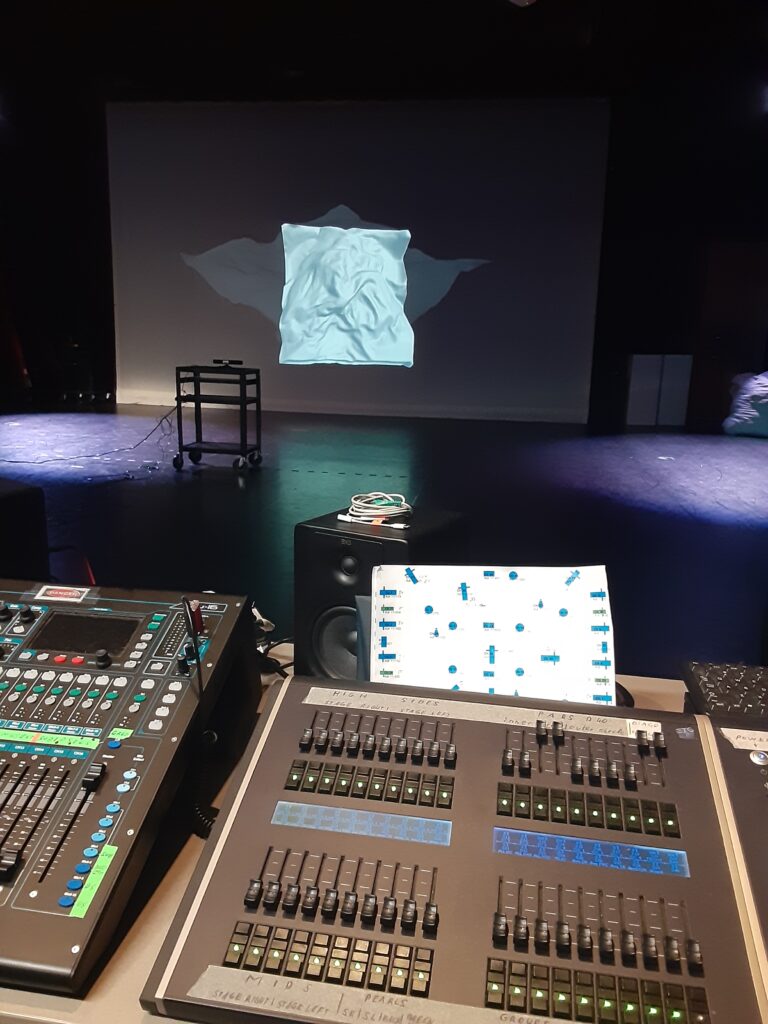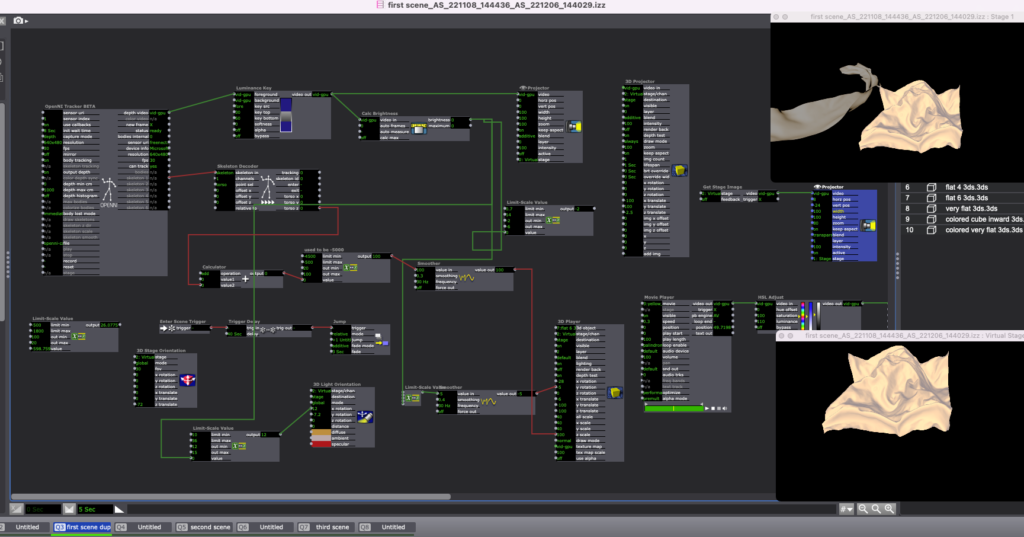Cycle 3 documentation – Dynamic Cloth
Posted: December 10, 2022 Filed under: Uncategorized Leave a comment »After cycle 2, the main aspect I worked on was controlling the Kinect input numbers in the ranges I wanted and that worked best for the type of movement I wanted, and also polishing the interactions based on that. I made the shapes ‘more sensitive’ in the Z-axis, more similar to how they were in Cycle 1, but using the skeleton data instead of just brightness inputs, although I still used brightness for subtle horizontal and vertical movement. I also experimented with placing some pre-recorded animations from Cinema 4D in the background, made transitions between the scenes smoother, and made the materials in 3ds Max less shiny.
The transitions required a workaround that Alex helped me with. Initially, I was trying to just set a 3-second delay in the Jump actor but I was getting weird glitches during that delay, like the next scene showing up temporarily in the wrong position, etc. So, I ended up putting empty scenes in between each interactive scene and setting a delay so that it looks like a smooth transition is happening between each scene.


I’m happy with how the Cycle 3 presentation went (other than Isadora crashing 2 times) and I have gotten a lot of interesting and useful feedback. It was also very enjoyable seeing everyone engage with the projections. The feedback I have gotten included experimenting with adding texture to the materials and seeing how that impacts the experience and perception of the models, another comment was about potentially introducing a physical aspect like touching a real piece of fabric with something like Makey-Makey that triggers transitions between the scenes, as well as tracking more types of user movements instead of mainly focusing on depth of one direction. Comments also included that the animations felt a bit different from the main interactive models which were in the foreground, but the animations faded in the background, which I definitely agreed with. I think the next iteration would be making the animations interactive too and getting better at materials in 3ds Max and experimenting with more texture because I liked that suggestion. In the next iteration, I would apply all these suggestions except the physical cloth part since my main goal with this project was to experiment with introducing movement and body tracking as one method of interaction I could explore in virtual environments. With that said, I am very happy with the takeaways from this class and the whole Cycle 1-3 process, including learning Isadora, getting more comfortable using the Motion Lab, and trying out a new type of project and experience.
I also learned a lot of new things about designing in and around a physical space, since that is something I usually don’t think about much. I learned about important considerations when using physical space and more free-form movement, especially when Alex was running backward and collided with Kinect. That also prompted me to think about putting it in front of the projection in the next iteration like I initially had in mind, and moving the projections up higher so that the sensor is not right in front of them.
Video compilation of everyone’s experience from Alex’s 360 videos:
Another useful feedback was participants expecting and wishing that they could use their hands more since that was the main tendency when first seeing cloth on the screen; a lot of participants wished they could manipulate it using their hands similar to how they would in real life. I think this would also be very interesting to explore in the next iteration, playing with tracking the distance between hands and hand movements to influence the number ranges.
As I mentioned during the discussion, I have been experimenting with this in a different project using Leap Motion that we checked out. I created a virtual environment in the game engine Unity and used physics properties on interactive materials to make them responsive to hand tracking using Leap Motion, which allows participants to push, pull, and move cloth and various other objects in the virtual space, so I also wanted to share a short screen-recording of that here too: